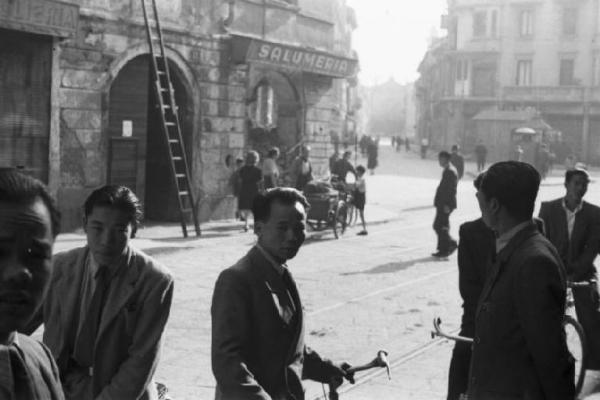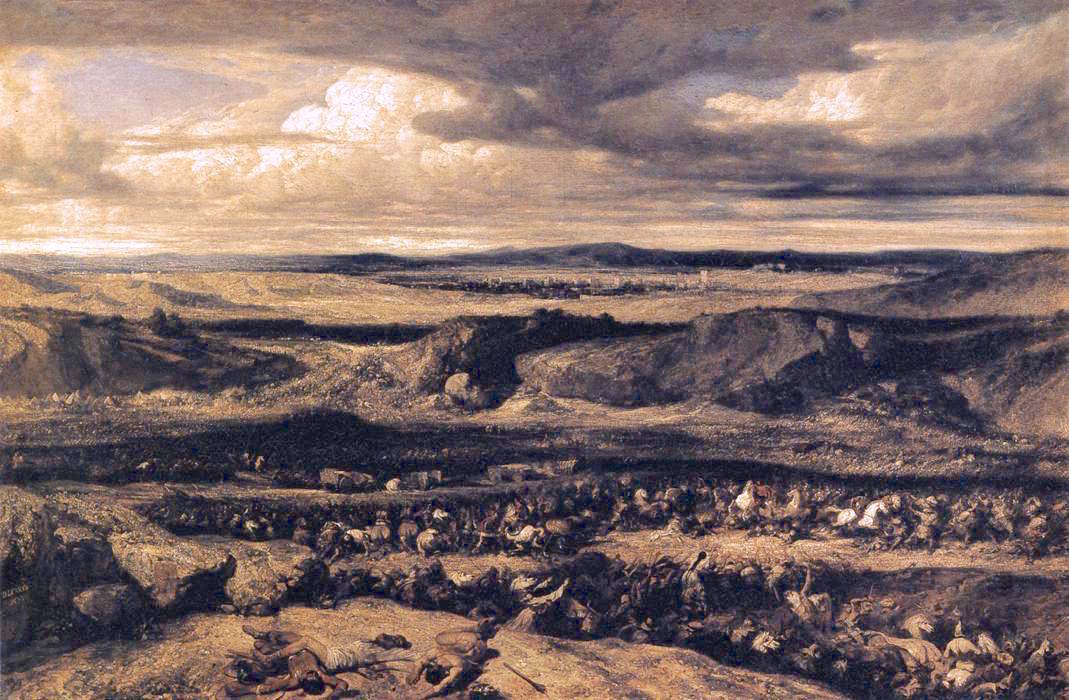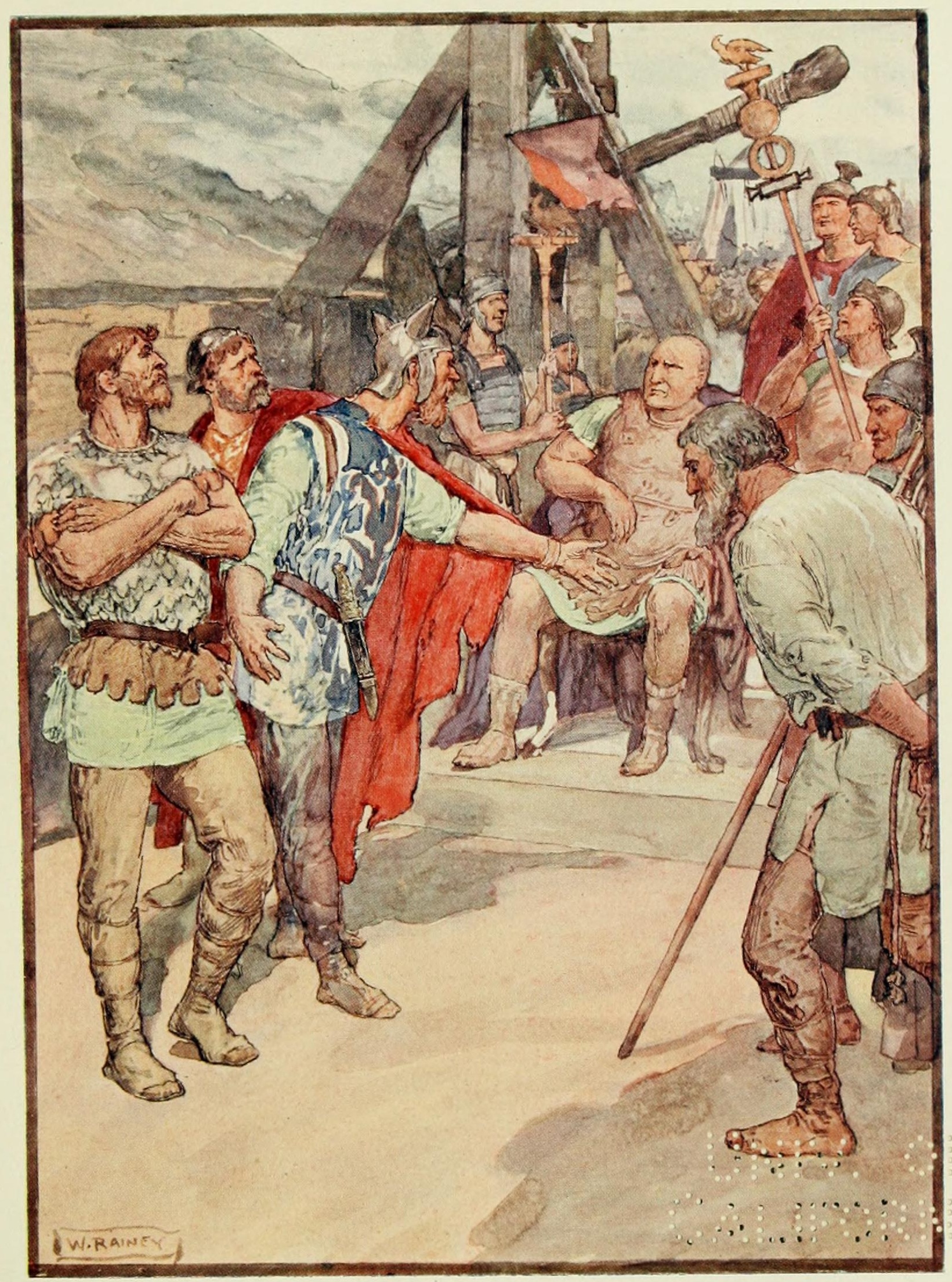|
Giovanni Battista Niccolini
Giovanni Battista Niccolini (29 October 1782 – 20 September 1861) was an Italian poet and playwright of the Italian unification movement or Risorgimento. Life In 1782, Niccolini was born in Bagni San Giuliano to a family of limited means. He initiated studied in law at the University of Pisa, but also pursued studies in classical languages. The upheavals of the Napoleonic era and the early death of his father, led him to seek employment. In 1807, he was named professor of history and mythology at the Accademia di Belle Arti of Florence. He wrote his first play in Greek in 1810. The play was strongly based on Greek legend and it was called ''Polissena''. This tragedy about the sacrifice of a virgin was so favourably received that his next three plays were also tragedies. He also served as librarian and tutor. Despite his republican leanings, he was spared retribution by the administration of the returning Grand Duke Ferdinand III, and obtained a post as Palatine librarian. O ... [...More Info...] [...Related Items...] OR: [Wikipedia] [Google] [Baidu] |
Stefano Ussi
Stefano Ussi (3 September 1822 - 1901) was an Italian painter, known first for his history paintings, and later for depicting Orientalist, mostly Arabian and Moroccan subjects. Biography He was born in Florence and studied there at the Academy of Fine Arts under Enrico Pollastrini. Among his colleagues there were Pietro Benvenuti and Giuseppe Bezzuoli. After studying at the Academy, he enrolled volunteer in the first war of independence, during which he was taken prisoner by the Austrian troops. After returning to Florence, he won the Triennale prize for the painting of the ''Resurrection of Lazarus'' in 1849, and presented works for the following years on historical and literary subjects at the exhibitions of the Florentine Società Promotrice di Belle Arti, which was led by Filippo Palizzi. Associated with the Macchiaioli group of painters gravitating around the Caffè Michelangiolo, he achieved great success with ''The Expulsion of the Duke of Athens'' (Florence, Galleria d� ... [...More Info...] [...Related Items...] OR: [Wikipedia] [Google] [Baidu] |
Antonio Foscarini
Antonio Foscarini (c. 1570 in Venice – April 22, 1622) belonged to the Venetian nobility and was Venetian ambassador to Paris and later to London. He was the third son of Nicolò di Alvise of the family branch of San Polo and Maria Barbarigo di Antonio. In 1622 he was sentenced to death for high treason by the Council of Ten and executed. Ten months later, the same council rehabilitated Antonio Foscarini and explicitly informed the European courts of his posthumous exoneration, and the revocation of the guilty verdict and death sentence. Notwithstanding the about turn, mystery still remains as to why an art-loving nobleman was embroiled in a Venetian tale of political intrigue, that involved factional infighting, institutional disputes between Church and State, and religious hostilities over Protestantism and Catholicism at the beginning of the Thirty Years' War, that led to the death of an innocent man. Background and early political career Antonio Foscarini had two brother ... [...More Info...] [...Related Items...] OR: [Wikipedia] [Google] [Baidu] |
Italian Poets
List of poets who wrote in Italian (or Italian dialects). A * Antonio Abati * Luigi Alamanni *Aleardo Aleardi *Dante Alighieri * Cecco Angiolieri * Gabriele D'Annunzio *Ludovico Ariosto *Francis of Assisi B *Nanni Balestrini *Dario Bellezza * Giuseppe Gioacchino Belli (Roman dialect) *Attilio Bertolucci *Carlo Betocchi * Alberta Bigagli * Giovanni Boccaccio * Maria Alinda Bonacci Brunamonti *Carlo Bordini * Franco Buffoni *Michelangelo Buonarroti *Helle Busacca *Ignazio Buttitta (Sicilian language) * Paolo Buzzi C *Dino Campana * Giorgio Caproni *Giosuè Carducci * Guido Cavalcanti * Roberto Carifi * Gabriello Chiabrera * Compagnetto da Prato D * Antonio De Santis (Italian and Larinese dialect) *Milo de Angelis *Fabrizio De André * Eugenio De Signoribus E *Muzi Epifani F * Franco Fortini *Ugo Foscolo G *Alfonso Gatto *Giuseppe Giusti * Corrado Govoni *Guido Gozzano *Lionello Grifo *Giovanni Battista Guarini * Amalia Guglielminetti *Margherita Guidacci *Guido ... [...More Info...] [...Related Items...] OR: [Wikipedia] [Google] [Baidu] |
People From The Province Of Pisa
A person ( : people) is a being that has certain capacities or attributes such as reason, morality, consciousness or self-consciousness, and being a part of a culturally established form of social relations such as kinship, ownership of property, or legal responsibility. The defining features of personhood and, consequently, what makes a person count as a person, differ widely among cultures and contexts. In addition to the question of personhood, of what makes a being count as a person to begin with, there are further questions about personal identity and self: both about what makes any particular person that particular person instead of another, and about what makes a person at one time the same person as they were or will be at another time despite any intervening changes. The plural form "people" is often used to refer to an entire nation or ethnic group (as in "a people"), and this was the original meaning of the word; it subsequently acquired its use as a plural form of per ... [...More Info...] [...Related Items...] OR: [Wikipedia] [Google] [Baidu] |
1861 Deaths
Statistically, this year is considered the end of the whale oil industry and (in replacement) the beginning of the petroleum oil industry. Events January–March * January 1 ** Benito Juárez captures Mexico City. ** The first steam-powered carousel is recorded, in Bolton, England. * January 2 – Friedrich Wilhelm IV of Prussia dies, and is succeeded by Wilhelm I. * January 3 – American Civil War: Delaware votes not to secede from the Union. * January 9 – American Civil War: Mississippi becomes the second state to secede from the Union. * January 10 – American Civil War: Florida secedes from the Union. * January 11 – American Civil War: Alabama secedes from the Union. * January 12 – American Civil War: Major Robert Anderson sends dispatches to Washington. * January 19 – American Civil War: Georgia secedes from the Union. * January 21 – American Civil War: Jefferson Davis resigns from the United States Senate. * January 26 ... [...More Info...] [...Related Items...] OR: [Wikipedia] [Google] [Baidu] |
1792 Births
Year 179 ( CLXXIX) was a common year starting on Thursday (link will display the full calendar) of the Julian calendar. At the time, it was known as the Year of the Consulship of Aurelius and Veru (or, less frequently, year 932 ''Ab urbe condita''). The denomination 179 for this year has been used since the early medieval period, when the Anno Domini calendar era became the prevalent method in Europe for naming years. Events By place Roman empire * The Roman fort Castra Regina ("fortress by the Regen river") is built at Regensburg, on the right bank of the Danube in Germany. * Roman legionaries of Legio II ''Adiutrix'' engrave on the rock of the Trenčín Castle (Slovakia) the name of the town ''Laugaritio'', marking the northernmost point of Roman presence in that part of Europe. * Marcus Aurelius drives the Marcomanni over the Danube and reinforces the border. To repopulate and rebuild a devastated Pannonia, Rome allows the first German colonists to enter territory co ... [...More Info...] [...Related Items...] OR: [Wikipedia] [Google] [Baidu] |
Chinatown, Milan
Chinatown in Milan is an ethnic enclave situated in the 8th quarter of Milan (Italy), and it is an important commercial district. It is the oldest and largest Chinese community in Italy, with about 21,000 people in 2011. The Milanese Chinatown was originally established in via Canonica in the 1920s by immigrants from Wencheng County, in the Zhejiang province, and used to operate small textile and leather workshops. Today the district is filled with hairdressing salons, fashion boutiques, silk and leather stores, libraries, traveling agencies, medicine centres and massage parlours. The Chinese takeaways and restaurants in the area are mostly specialised in Zhejiang cuisine. Several Italian-Chinese companies are also headquartered in the neighborhood, including the editorial desk of the newspaper ''Europe China Daily''. Via Paolo Sarpi is the main street and is largely a pedestrian area. Other important locations are Via Bramante, Via Giovanni Battista Niccolini [...More Info...] [...Related Items...] OR: [Wikipedia] [Google] [Baidu] |
Pietro Magni (sculptor)
Pietro Magni (October 21, 1817 - January 20, 1877) was an Italian sculptor. Born in Milan, he studied at that city's Accademia di Belle Arti di Brera before moving to the workshop of Abbondio Sangiorgio. Later in his career he became influenced by Tuscan sculptor Lorenzo Bartolini, whose work he first encountered in 1837. He traveled to study in Rome, joining Giuseppe Garibaldi in 1849. He is best known for his ''Girl Reading'', first carved in 1856; today the original may be seen in Galleria d'Arte Moderna, Milan, while copies exist in numerous other museum collections, e.g. in Palácio Nacional da Ajuda, Lisbon. Among Magni's other works are a public monument to Leonardo da Vinci on Piazza della Scala and several marble sculpture groups; he also executed statues for the Milan Cathedral in the 1860s. Magni died in Milan in 1877. See also * La lettrice * Giovanni Battista Niccolini Giovanni Battista Niccolini (29 October 1782 – 20 September 1861) was an Italian poet ... [...More Info...] [...Related Items...] OR: [Wikipedia] [Google] [Baidu] |
La Lettrice
La Lettrice, also known as "Reading Girl", is a marble sculpture created by Pietro Magni in 1856, the original version is kept at the Galleria d'Arte Moderna (Milan), Details Unlike traditional sculptures, La Lettrice does not have an unexpressive goddess face, instead it has human facial expressions. The girl is sitting on a chair with no shoes, reading a book written by poet and playwright Giovanni Battista Niccolini. On the original sculpture, lines from the text can be read: one of them is celebrating the freedom of Lombardy from Austrian Empire persecution after the Revolutions of 1848 with an emotive expression with a tear on her cheek. La Lettrice represent Italy as a young nation coming into maturity. Further versions After the creation of the original sculpture, other versions were created and can be seen in other places, another version of La Lettrice can be seen at the National Gallery of Art. See also * Pietro Magni (sculptor) * Galleria d'Arte Moderna (Mil ... [...More Info...] [...Related Items...] OR: [Wikipedia] [Google] [Baidu] |
Cimbri
The Cimbri (Greek Κίμβροι, ''Kímbroi''; Latin ''Cimbri'') were an ancient tribe in Europe. Ancient authors described them variously as a Celtic people (or Gaulish), Germanic people, or even Cimmerian. Several ancient sources indicate that they lived in Jutland, which in some classical texts was called the Cimbrian peninsula. There is no direct evidence for the language they spoke, though some scholars argue that it must have been a Germanic language, while others argue that it must have been Celtic. Together with the Teutones and the Ambrones, they fought the Roman Republic between 113 and 101 BC during the Cimbrian War. The Cimbri were initially successful, particularly at the Battle of Arausio, in which a large Roman army was routed. They then raided large areas in Gaul and Hispania. In 101 BC, during an attempted invasion of the Italian peninsula, the Cimbri were decisively defeated at the Battle of Vercellae by Gaius Marius, and their king, Boiorix, was killed. So ... [...More Info...] [...Related Items...] OR: [Wikipedia] [Google] [Baidu] |
Gaius Marius
Gaius Marius (; – 13 January 86 BC) was a Roman general and statesman. Victor of the Cimbric and Jugurthine wars, he held the office of consul an unprecedented seven times during his career. He was also noted for his important reforms of Roman armies. He set the precedent for the shift from the militia levies of the middle Republic to the professional soldiery of the late Republic; he also improved the '' pilum'', a javelin, and made large-scale changes to the logistical structure of the Roman army. Rising from a well-off provincial Italian family in Arpinum, Marius acquired his initial military experience serving with Scipio Aemilianus at the Siege of Numantia in 134 BC. He won election as tribune of the plebs in 119 BC and passed a law limiting aristocratic interference in elections. Barely elected praetor in 115 BC, he next became the governor of Further Spain where he campaigned against bandits. On his return from Spain he married Julia, the aunt of J ... [...More Info...] [...Related Items...] OR: [Wikipedia] [Google] [Baidu] |
Filippo Strozzi The Younger
Filippo Strozzi the Younger (January 4, 1489 – December 18, 1538) was a Florentine banker, and the most famous member of the Strozzi family in the Renaissance. He is best remembered as a tragic hero and defender of the lost Florentine republic against the Medici dukes – yet this is almost entirely a nineteenth-century fiction of nationalist historians and dramatists. He had been one of the staunchest supporters of the House of Medici in Florence and Rome. Biography Born in Florence as Giambattista Strozzi, he was rechristened by his mother with the name of his father Filippo Strozzi the Elder, who had died two years after the child's birth. From the late fifteenth century, Medici power rendered the Florentine nobility, including the various branches of the Strozzi family, more courtiers than citizens. Filippo the Younger was merely rich until 1515, when he entered the service of Pope Leo X as depositor general of the Apostolic Chamber. From here he built a financial empir ... [...More Info...] [...Related Items...] OR: [Wikipedia] [Google] [Baidu] |

_1938.jpg)





